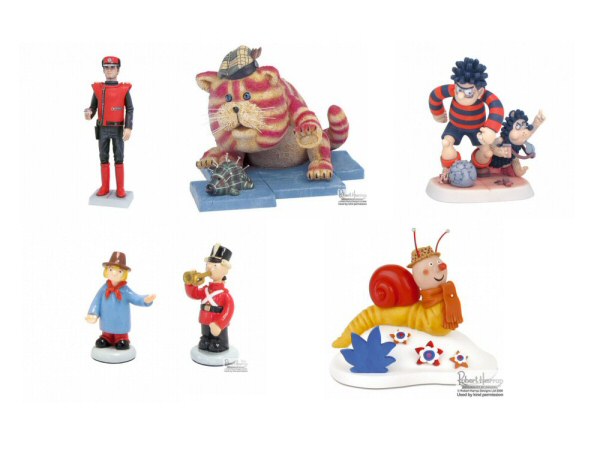Digger: Hello Bob.
Bob:
Hello David.
Digger:
How are you?
Bob:
Not too bad.
Digger:
What is your background, can you tell us how Robert Harrop
Figurines started and how the company has evolved into what
it is today?
Bob:
I came into this because I was making my living as a show
jumper/trainer.
Digger:
That’s an interesting change.
Bob:
I had a back injury when I was 29. I’d been trained and
got my qualifications in three-dimensional design and
ceramics at Liverpool and then Wolverhampton Art College. I
then went into the family business, which was breaking and
making horses – in other words training horses. That
carried on until I was 29. I was doing bronze work alongside
my equestrian activities. Bronzes of Arkle and Mill Reef and
on the jumping side Penwood Forge Mill. We would buy horses
in Ireland every year.
Digger:
My family are from Kerry and Cork.
Bob:
I used to buy them all over. I love Kinsale and I'd go out
fishing there – some amazing catches. That was the life.
We would buy half a dozen horses, drag them over to England,
clip them out, break them and make them. Twelve months later
our aim was to have qualified them for Wembley and The Horse
Of The Year Show. And in those days, for six of them, I
would pay £1,000. It just shows how things have changed
since the early seventies. These were well bred horses. We
would ideally get them qualified for fox hunting which is
the first rung on the ladder for a decent show jumper. Or
they’d go off eventing or point to pointing. Last but not
least they’d go hunting, but the reality was we’d aim to
buy for £200 and sell for £600 so we could turn a profit
in the middle. That was my job. We jumped all over the
place. We won a competition with a lovely horse I had in
Vienna called Calder and they were big jumps in Europe –
the fences were always higher on the continent because they
worked with big slopes rather than the walls. That’s what
I did before and when I had the accident it was just, touch
wood, a back injury that stopped me from riding
professionally. I then coincidentally got involved
with the people who owned Red Rum. It was at the time that
The Grand National was under threat – the family that
owned Aintree wanted to sell it for housing. We formed a
limited company called Red Rum Limited and we did some
sculptures and we did bronze work that was auctioned off at
the prime northern and midland racecourse hotels. The
Adelphi in Liverpool and others. Red Rum was probably the
most commercialised horse.
Digger:
Yes, if you ask 100 people to name a horse, particularly
people of a certain age, 95% of them will say Red Rum.
Bob:
Yes. And we took him everywhere. We took him to open the
first spring fair and it had moved from Blackpool to
Birmingham. Anne Diamond got the idea of riding Rummy into
the piazza and she was such a tiny little thing. That was a
nice bit of publicity and then we got involved in the trade,
selling my pieces and other things. I had a commission from
a charity to do a limited edition bronze of a Labrador. We
were based in Shropshire where one of my connections was
with Weston Park and the Earl of Bradford. We used his old
Labrador as the model for this particular piece and while I
was doing it I did some working sketches where I combined
the man and the dog. That was how the dogs started.
Initially they were called The Country Companion because
when we did the Labrador, it needed a companion so I matched
it with a spaniel and it went on from there. And then we
were doing county shows and National Trust properties with
half a dozen to a dozen pieces that I would cast and
Margaret, my wife, would paint and off we went. This was all
cracking fun really. An old RAF fellah called Tiger Davis
was an agricultural and country clothing salesman out in the
southwest and that’s where we originally sold into those
sorts of shops. Tiger did the southwest and we had another
couple of lads who we met at the county shows that did
various other places in the country. That’s how we get
involved in the giftware trade.
Digger:
How did it develop into the range you have now Bob?
Bob:
In the mid-eighties we had full production and we took a
little unit in Shifnal. And we went on from there. But as we
got further into the gift trade we were expanding and
thought we needed something typically English. The dogs were
very English. That Englishness attracted a lot of interest
from abroad and we wanted to complement that. And,
coincidentally one afternoon, I just thought –“What is
English?” and somehow I thought of The Beano and why it
came into my head I don’t know.
Digger:
Ironically that’s published in Dundee in Scotland.
Bob:
Yes I learned that as we went on. I rang a man called Peter
Clark who was the licensing manager at the time and the rest
is history. That was 1994 and we started producing them in
1996 – that was a lesson in itself as to the licensing
trade and how long it took to get things done.
Digger:
Copyrights and trademarks and so on?
Bob:
Oh yes. So off we went from there and that took us into the
noughties.
Digger:
It must feel as though it’s all a bit of a blur because
there has been so much going on?
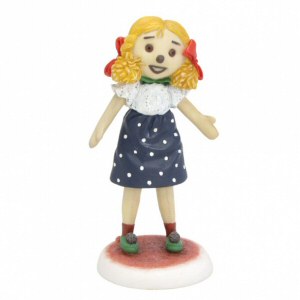
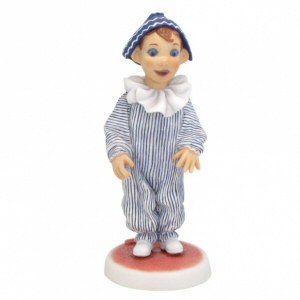
Bob:
It does. The dogs have always been very popular and are
niche but nicely niche. They keep finding new markets
because you’ve got the double meaning for the dogs. One is
to the breed owners and if you look at the bulldog policeman
as an example, we sell equally to bulldog owners and to
policemen. And so on. But then we’ve added various other
licenses. The main thing is keeping within the same genre
and what we have is childhood memories and nostalgia and the
one followed the other. So we got Beano and as we went along
we then went on to the PG chimps which were still being
shown at that time. They were, again, very nostalgic and
there are a lot of anecdotes because the chimps were
ostensibly caricatures of the Carry On gang. Most of the
voices were from the Carry On team.
Digger:
I can remember Irene Handl and “Coo-eeh, Mr Shifter…”
Bob:
That’s the one. And Bernard Bresslaw was in that. No-one
knew that but we did. As we got further into the project it
got very interesting. Then I was offered a deal by a girl
called Kirsty Wood who worked for a company called Link
Licensing. She came to see me to try and sell me Percy The
Park Keeper. It was far too contemporary for us at that
time.
Digger:
A bit like a poor man’s Postman Pat?
Bob:
Yes, we didn’t go with that but she’d got a portfolio
and in there she’d got Camberwick Green and I literally
bought that out of my back pocket.
Digger:
Pugh, Pugh, Barney McGrew, Cuthbert, Dibble and Grubb.
Bob:
Oh, everything. We have an archive and you ought to come up
here David.
Digger:
I will.
Bob:
We have an archive of the whole history. 1,500 items in a
beautiful gallery in an eighteenth century mill alongside
the river. And this is where our collectors come to. So then
we got involved with Camberwick Green - this was 1997. Once
we got into that then we added more properties to our
portfolio by virtue of being approached by licensors
themselves.
Digger:
It's nice when people start coming to you, isn't it?
Bob:
I think that the theory of doing these characters is one
thing but the actual reality of doing justice to them and
getting a fanbase is another. With the licensor's themselves
they're actually enjoying what we're doing and that's very
satisfying. When you have gone beyond approval and have gone
to satisfaction and enjoyment and trust. And this is why our
partnerships have lasted so long.
Digger:
You must have been coming up to the time of The Internet
around about then. When did you come online - I'm supposing
it must have completely changed your business model as well?
Bob:
Yes, I think the reality is if we go back to the turn of the
century up to about 2002 then it was virtually
Internet-free. There were little bits of involvement and we
had a catalogue online and the site just showing various
bits of information, it wasn't an ecommerce site. Initially
we didn't supply anybody who was etailing to protect our
customers, but in the main they have some online presence,
mainly because of high street rates and rents and lack of
competitiveness. I think there wasn't one particular issue,
but everything at the same time. Of course, the first thing
was offshore production where our ceramics industry was
decimated because of the Chinese manufacture and that caused
confusion. This was almost like a smoke screen that allowed
the Internet to establish itself. In about 2002 we had 100
outwork painters and 40 manufacturing staff and that was a
big part of the value of the company. With the combination
of The Internet and offshore production, you had people
coming into the business that didn't need establishment, if
you know what I mean?
Digger:
Yes, they could be in a shed in their garden.
Bob:
Well, they could do it and it was a very damaging thing
because you'd spend years creating a brand, training,
developing skills and then suddenly overnight they're not
that important
Digger:
It's like making it a level playing field for allcomers.
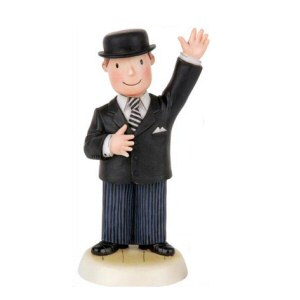
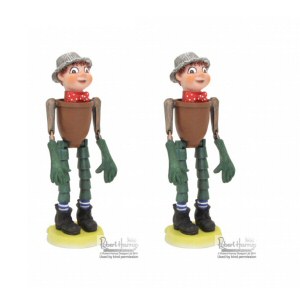
Bob:
And then experience, skill and ability didn't matter and it
downgraded the whole industry. At the time I'm talking about
you'd got good companies like Richard Cooper with his
Country Artists and then John Hammond with Border Fine Arts.
They'd built-up to a point where they had hundreds of
painters and extensively equipped premises and their
retail and distribution and then that was severely compromised In
a very short space of time.
Digger:
You're clawing it back now because you have the contacts,
the licenses, the reputation and the collectors.
Bob:
Yes, but what it does is it changes things. What I'm saying
to you is I wouldn't say "Great" and celebrate The
Internet. Far from it.
Digger:
That's what a client who does Vintage Drums was saying to me
yesterday. He saw The Internet as a real force for harm to
shops and traditional service where the lowest price wins
even if it means shipping items backs and forward across the
world. He prefers people specialising in a product or a
geographical area and providing face to face service rather
than be a "box-shifter".
Bob:
I would say The Internet's not a professional tool. When we
used to have a business model that was very straightforward
- we would go to the International Spring Fair every
February with new products and we would have an acid test on
the first Sunday of February. Within the first four hours
you would probably know whether you'd got a winner or a
loser. Very straightforward and you geared your year around
that. There were target retailers that you wanted to be in
and they were the big multiples. We were selling to Royal
Doulton, to House of Fraser, to Debenhams and all these
people were heavily into collectables. These were targets
that became partners and they, of course, had got the
distribution and the network. Not only that, they had the
professional approach and studied the product, did their
homework, they took and offered the range whether it be
Camberwick Green or The Beano or the dogs. They would do it
in depth. So they would have 20 different items from our
range and order 20 of each as a starting order at the NEC.
Then you've got a professional way of doing business and you
knew they were getting into places that you couldn't get
into because they'd got 100 stores and this, that and the
other. Their stores had high street prominence and it was
another very strong partner who could do what we couldn't
do. We were designers and manufacturers of figurines. It was
a simpler time and in many ways better. Our foreign
distribution used to be marvellous and we considered we had
the best distributor in Europe, Warnecke, who first found us
at the ISF. It was the same with the USA, Australia and many
other parts of the World. Things changed with China and The
Internet and so on. People gained access to product images
and there were a lot of complicated legalities - it
compromised the whole retailing sector.
Digger:
You've got some great collectable figurines there from many
of the most popular TV, film and comic characters. What are
the best sellers and what customer feedback do you get about
them?
Bob:
The best sellers are Camberwick Green, The Beano and
obviously we have Wallace and Gromit and of course the
perennial Doggie People.
Digger:
What about the Gerry Anderson stuff?
Bob:
It's good but very niche. We have a good relationship now
with the Granada people which have taken over the license.
It's nice and settled and that's started to come into the
successful niche items in our range.
Digger:
What are your retro passions?
Bob:
It would probably be Oliver Postgate. I always use the rule
of thumb that when you were a kid, what were the ones you
dashed home from school for? My dash home from school was
Noggin The Nog. The Collection I am most proud of has to be
Roald Dahl, Our Creative Director, Matt Buckley achieved the
impossible by capturing the fantastic, but extremely sketchy
illustrations by Quentin Blake in 3D form. We were obviously
not alone in our opinion because that year we were presented
with The Gift of the Year Award by Miss Ruby Wax at the
Giftware Association “Oscars” held at The Savoy Hotel, London. Matt
and his brother Dan Buckley (my stepsons) are the past,
present and future of the company, Matt In Design and Dan on
the Marketing side.
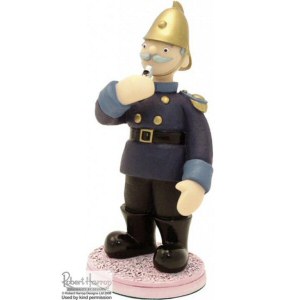
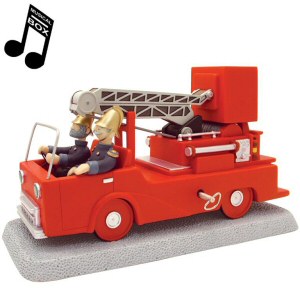
Digger:
Dahl is fantastic and I love the way he is so dark and
describes rather rude stuff that kids would giggle at.
Bob:
He goes to areas that nobody else would go to. It's a good
involvement and we're very involved with the Foundation.
Digger:
Why is Retro and Nostalgia, and these characters in
particular, so popular in so many people's lives?
Bob:
I just think it's like when people come here. I mentioned
about my dash home from school and I'd throw the same back
to you and you would have one, wouldn't you?
Digger:
Yes, mine would be The Prisoner TV series. I had to get back
to watch that.
Bob:
Ah, right.
Digger:
I went to Portmeirion a couple of years back for a weekend
and it was lovely. One of the few places that look better in
real life than on TV.
Bob:
Yes, we walk in that area quite a lot. It's not too far from
here. The reason why Retro and Nostalgia is so big is that
they always tick a box. When people come to our archive, or
gallery they will always find something. Camberwick Green,
The Beano, Supermarionation, Bagpuss and The Clangers…..
Digger:
It's an impressive range you've amassed.
Bob:
Oh, superb. That's the true reflection on the company. We've
taken these projects on and we've achieved them. What we
have is a collection that is pure nostalgia.
Digger:
Any that you didn't do or weren't possible because of the
technical execution?
Bob:
People always expect you to do Postman Pat or other iconic
areas like that. But there are certain items that are good
for reproduction and figurines and there are other items
that are not. We did The Wombles and we learned a very
important retail lesson, if I asked you to name eight
Wombles would you be able to do it?
Digger:
I could probably name four.
Bob:
Exactly. That's the point because Elisabeth Beresford was
advised that there weren't enough pieces in the range so
they then came up with a Chinese Womble, a West Indian
Womble...
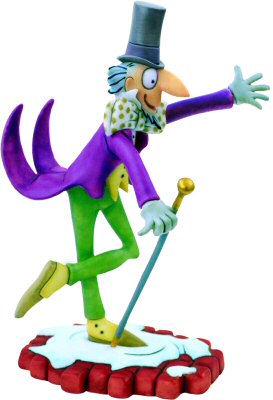
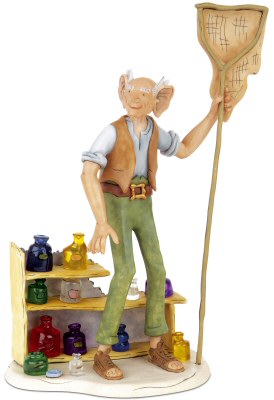
Digger:
(Laughs) A gay Womble.
Bob:
They didn't quite get to that but we got a Brazilian Womble.
The problem was that everyone knows Uncle Bulgaria and
Orinoco and Tobermory. But they don't know these obscure
characters that were just created for commercial reasons.
From the retail point of view, if you sell the retailer ten
items he has to sell ten to make money off the last two. If
half a dozen of those aren't recognised by the public then
he's left with the stock. It wasn't clever to expand the
range, it was better to rationalise it and keep it strong.
Digger:
What are your plans for Robert Harrop Figurines in the
future Bob?
Bob:
The next two years are sorted out with new films for Wallace
and Gromit and new characters. There's two new films coming
out and we're meeting them very soon to discuss that.
Developments on the Supermarionation front too - we're going
back into the origins of it with Four Feather Falls.
Digger:
I did an interview with Nicholas Parsons who was Tex Tucker.
Bob:
Yes, he was. Fireball XL5 and so on. That will all be very
interesting and then we're looking at other possibilities
which are probably confidential but we've got plenty going
into the studio. We've also got a collective of
sculpture-based pieces which is going more into
'statemental' work. We are involved with a bronze foundry
and a pewter foundry and we're working with other materials.
The future is a telephone call away in the sense that you
never know what the next call might bring.
Digger:
Can we expect to see your figurines on The Antiques Roadshow
one day?
Bob:
I certainly think that the classic icons which are of their
time will be on there. I would say it would be Beano,
Camberwick Green, Dahl that would be of their time. Because
we have done them in a way that is admired by the original
creators as well as by the public then that is enough to
make them special.
Digger:
Well, thanks Bob for sharing the history of Robert Harrop
Figurines and your passion for these great characters.
Bob:
Thanks David.
